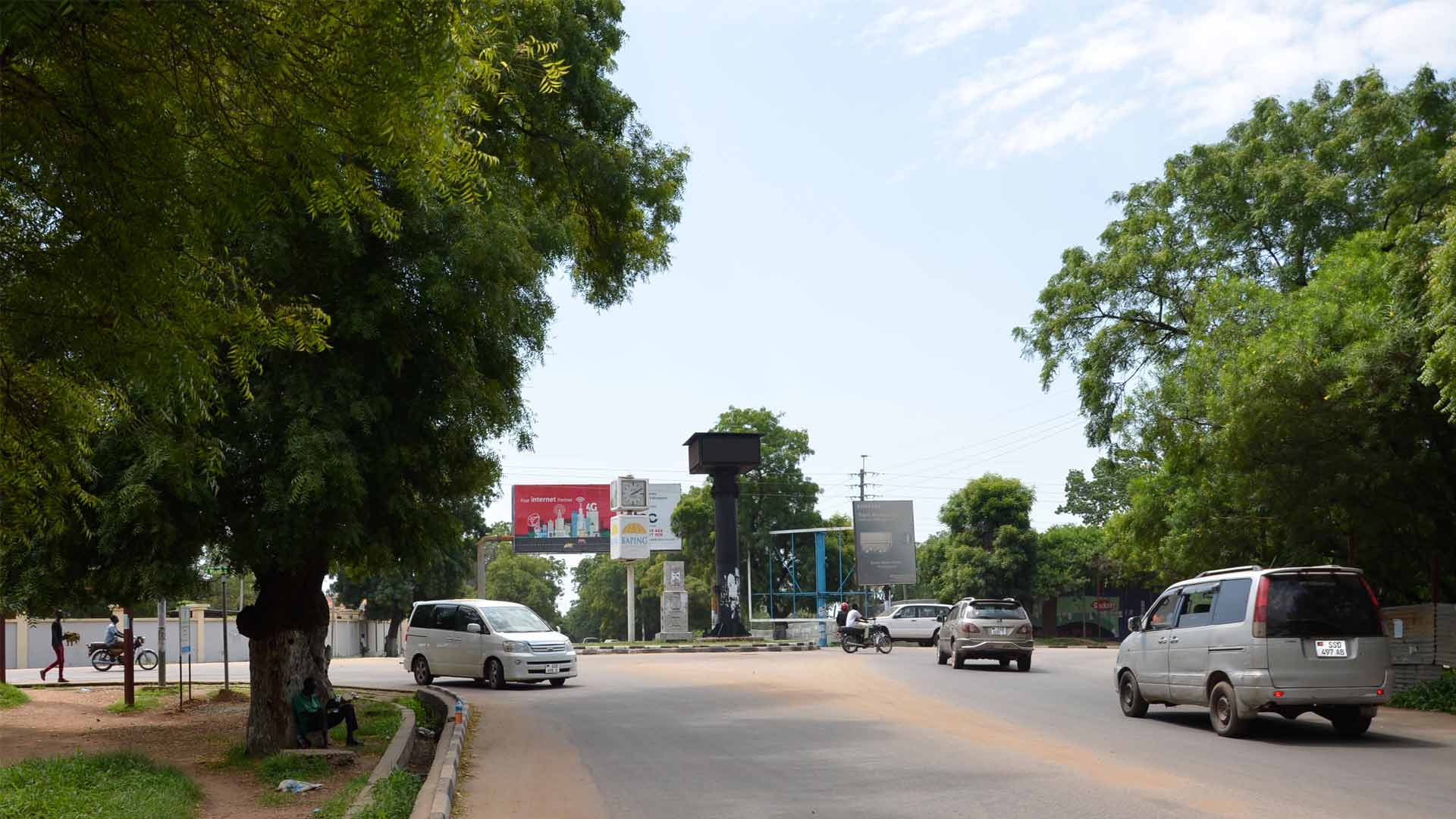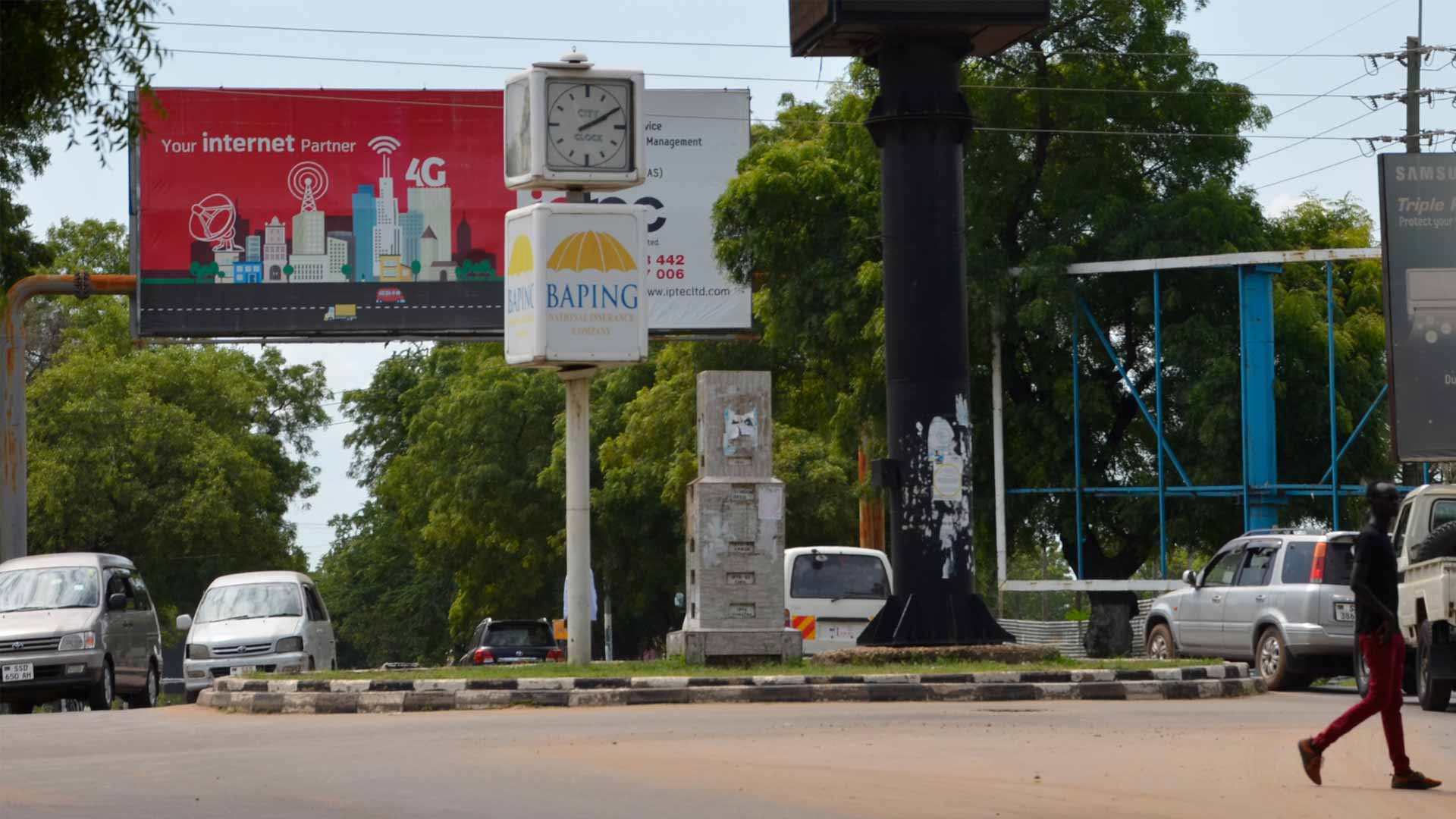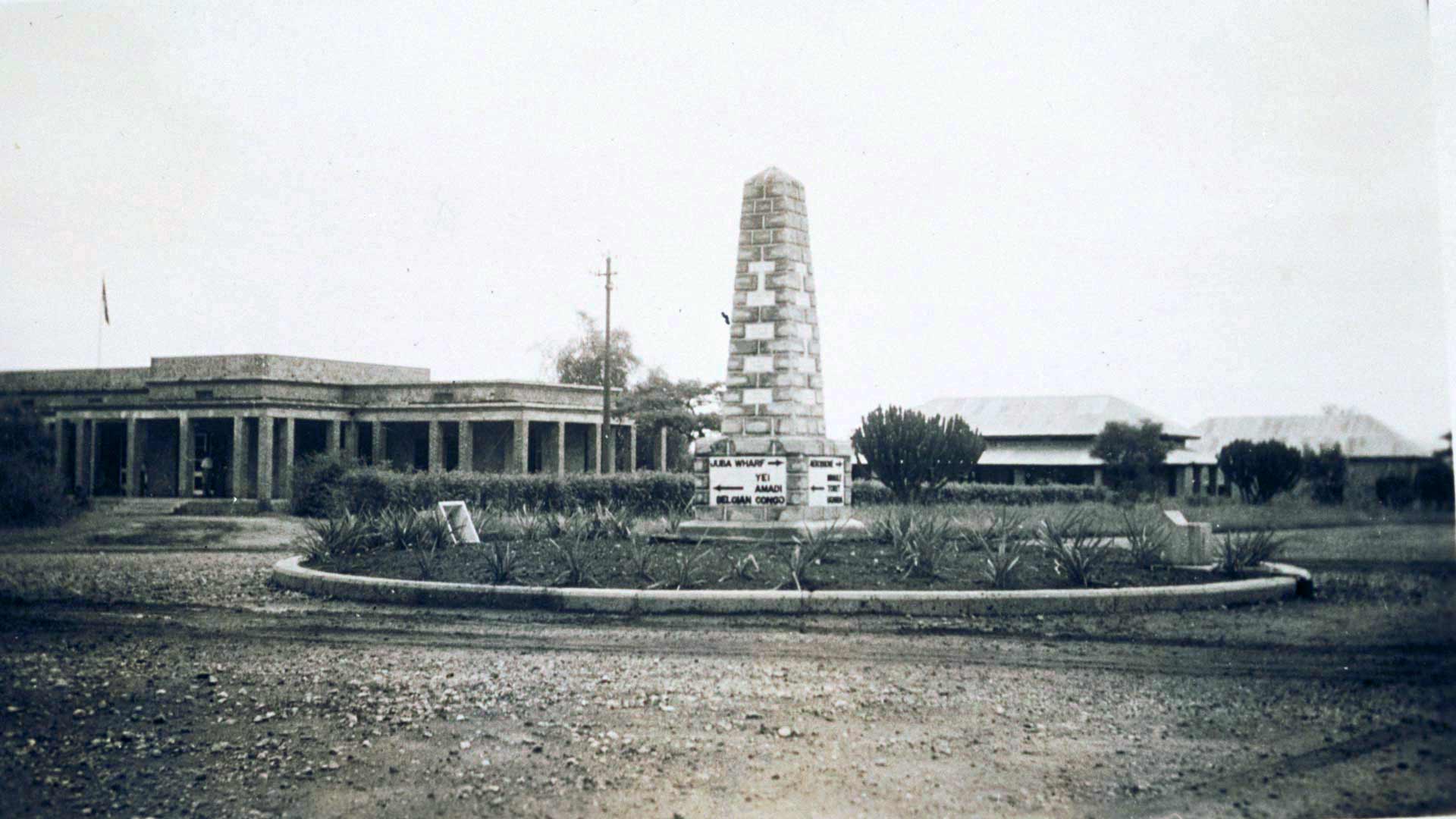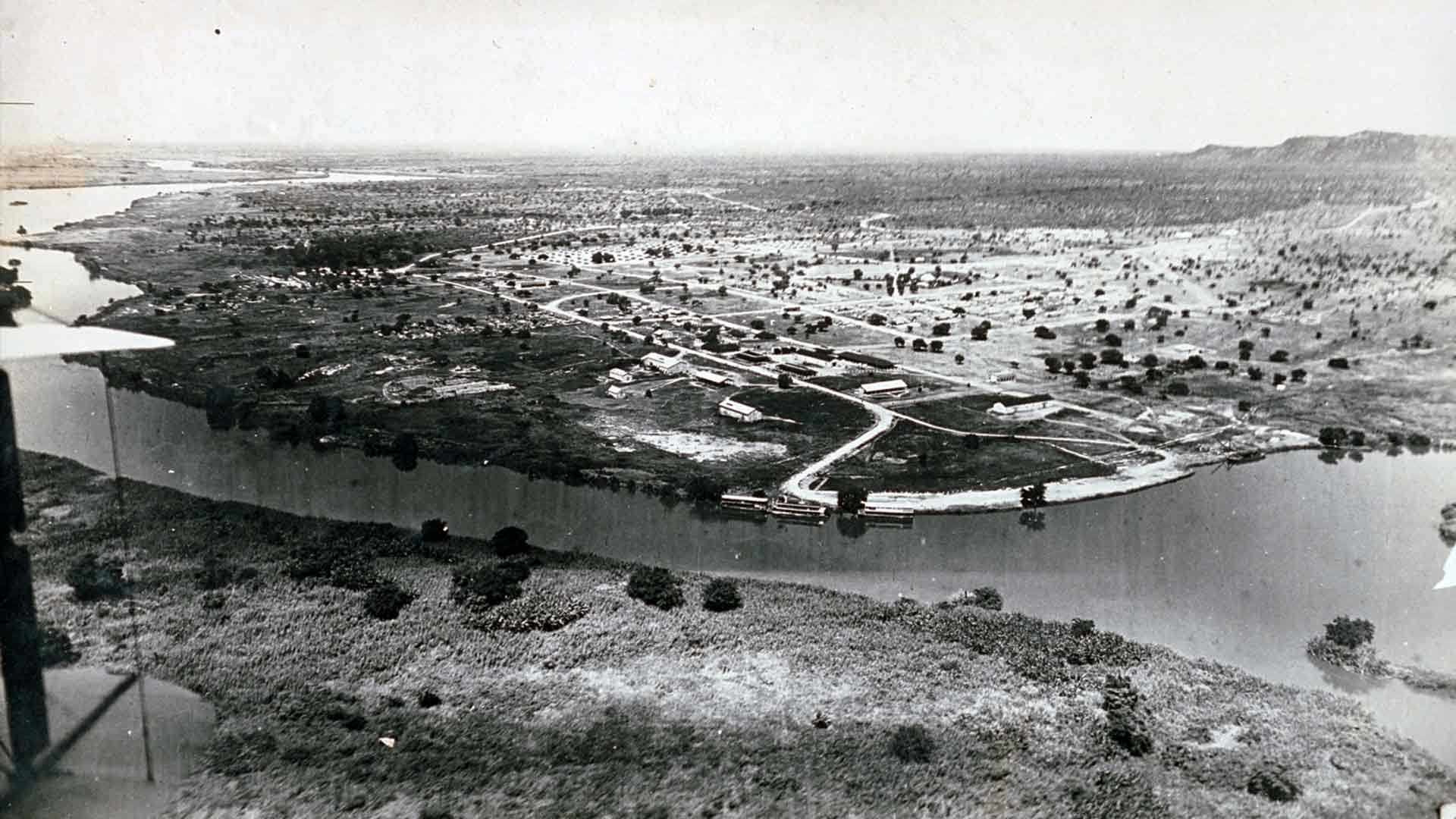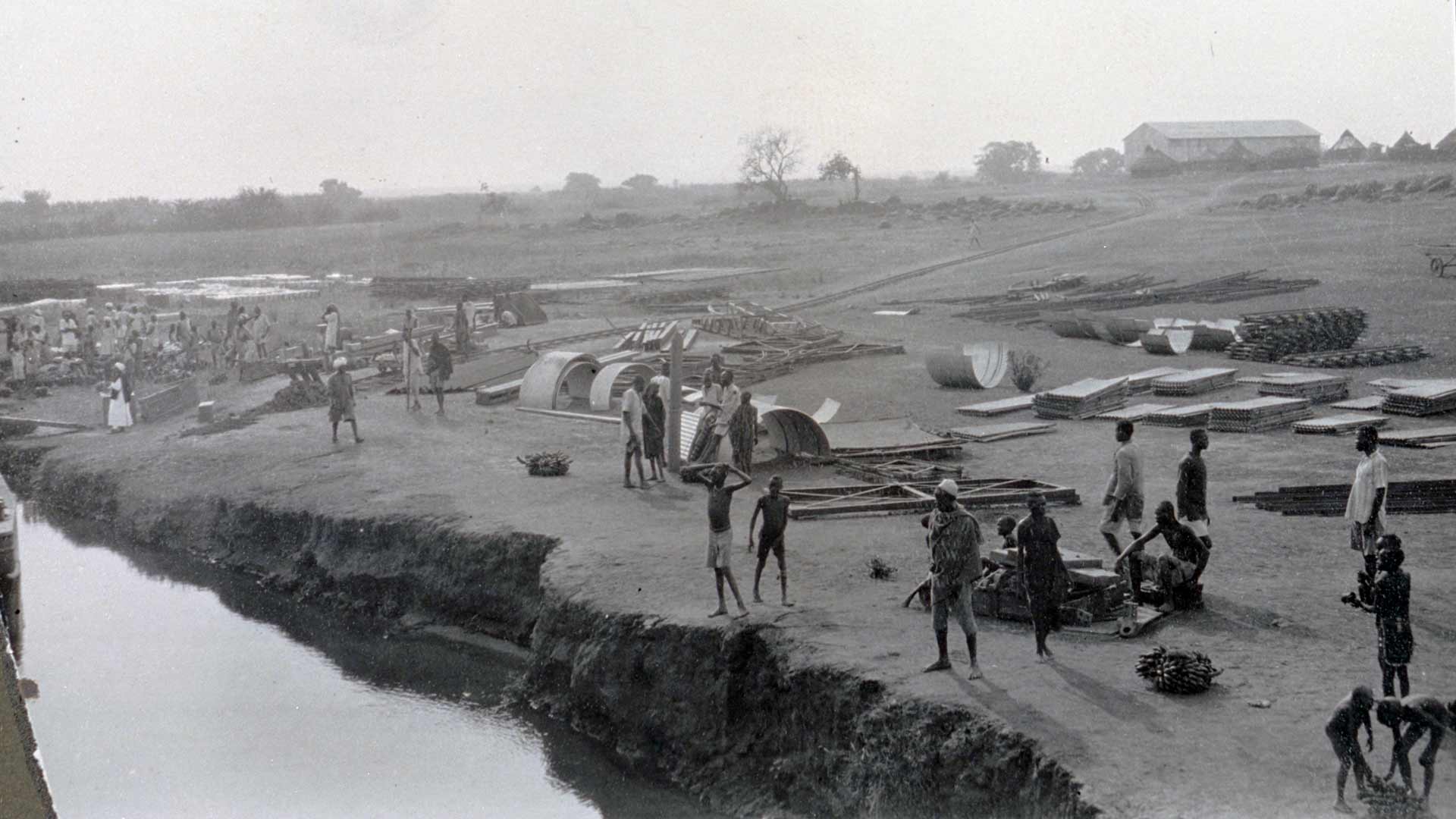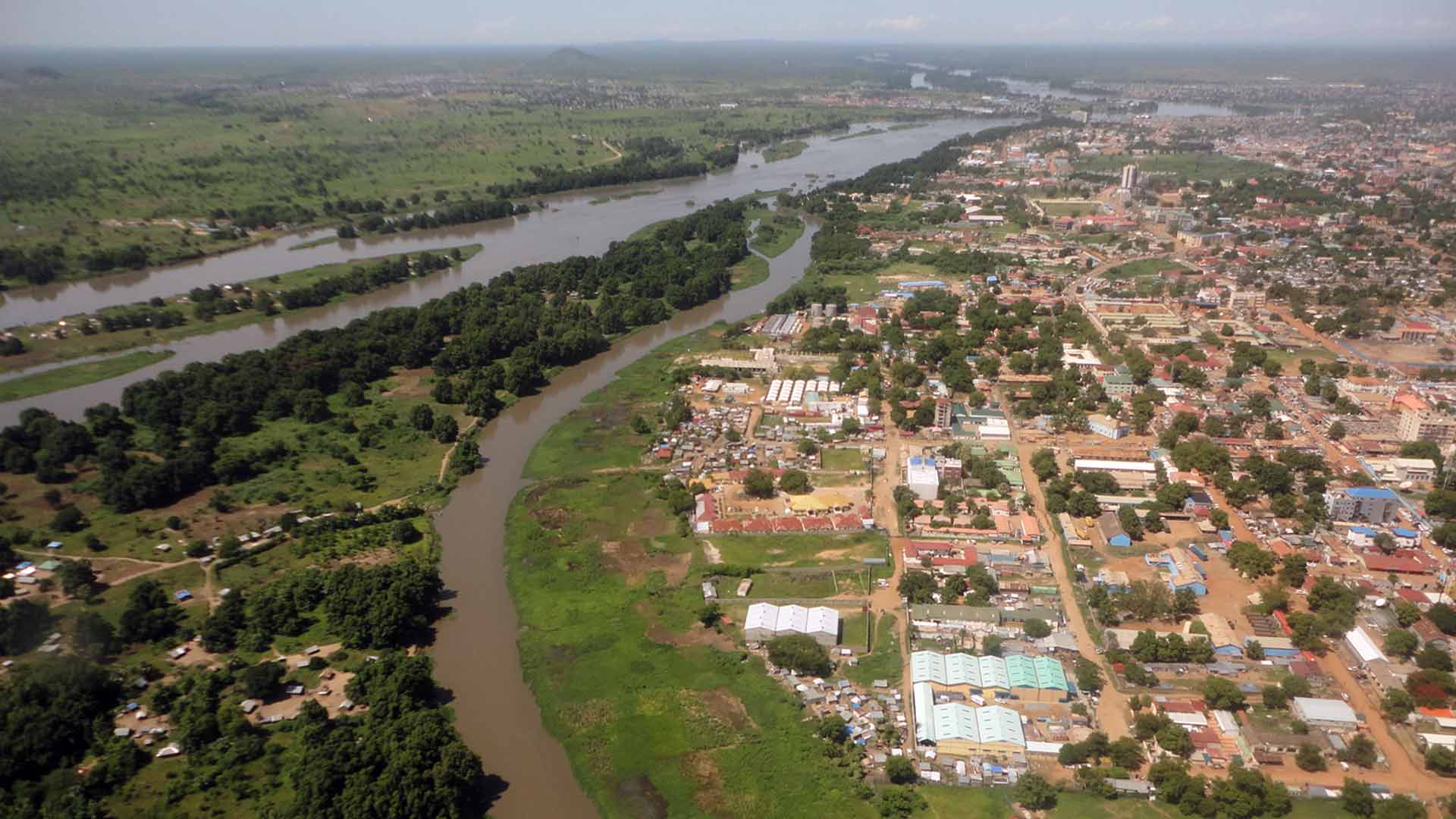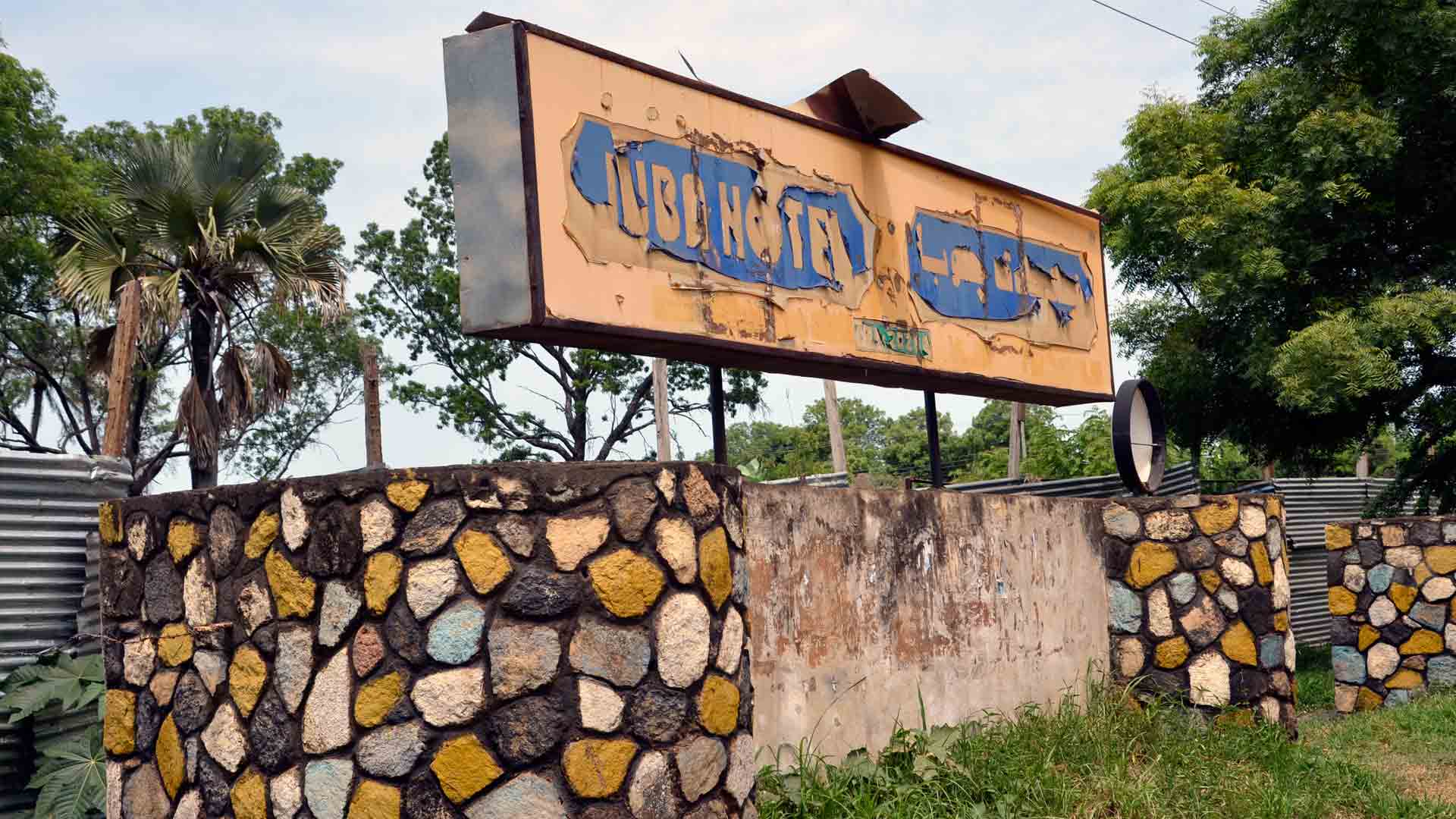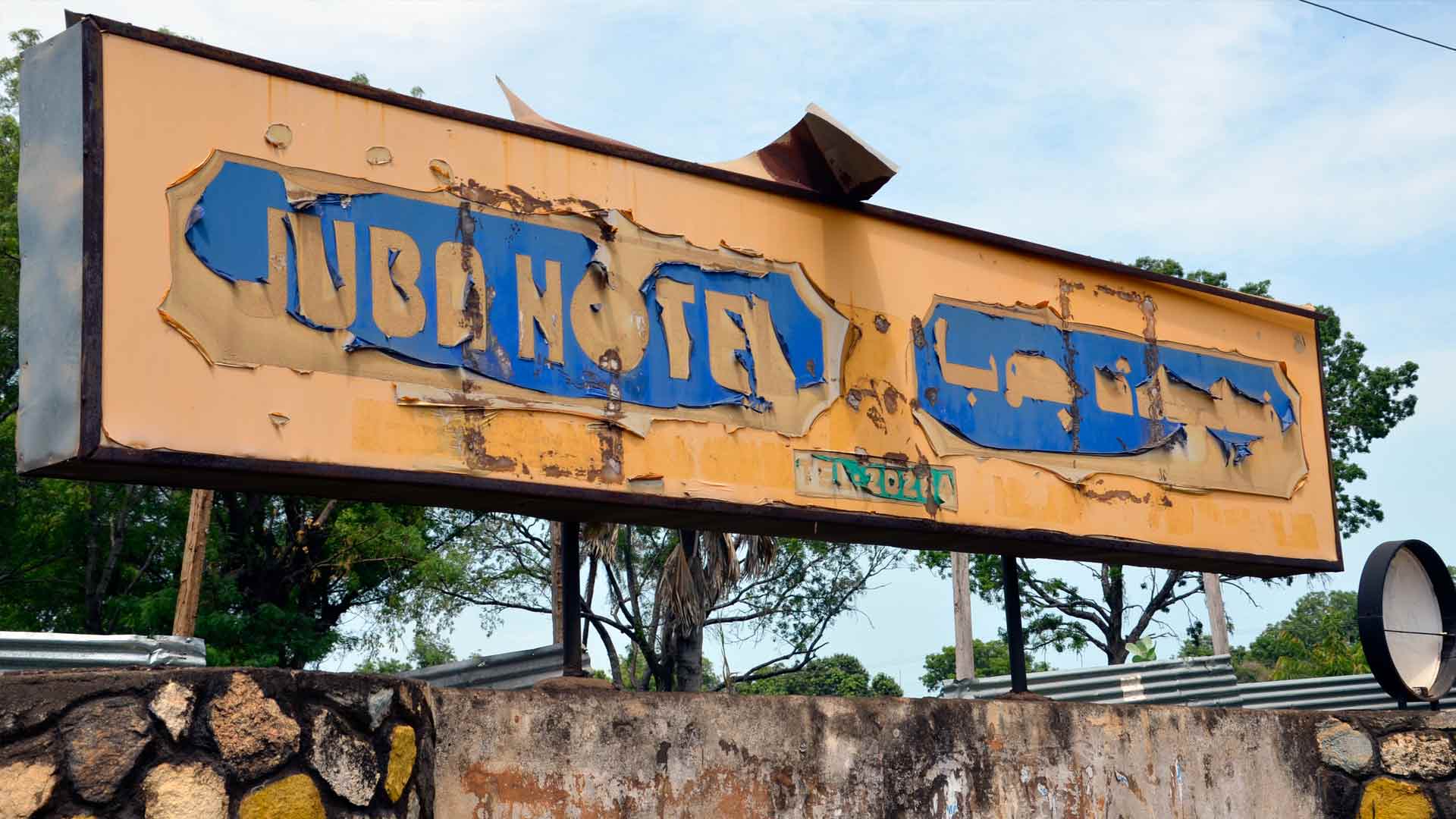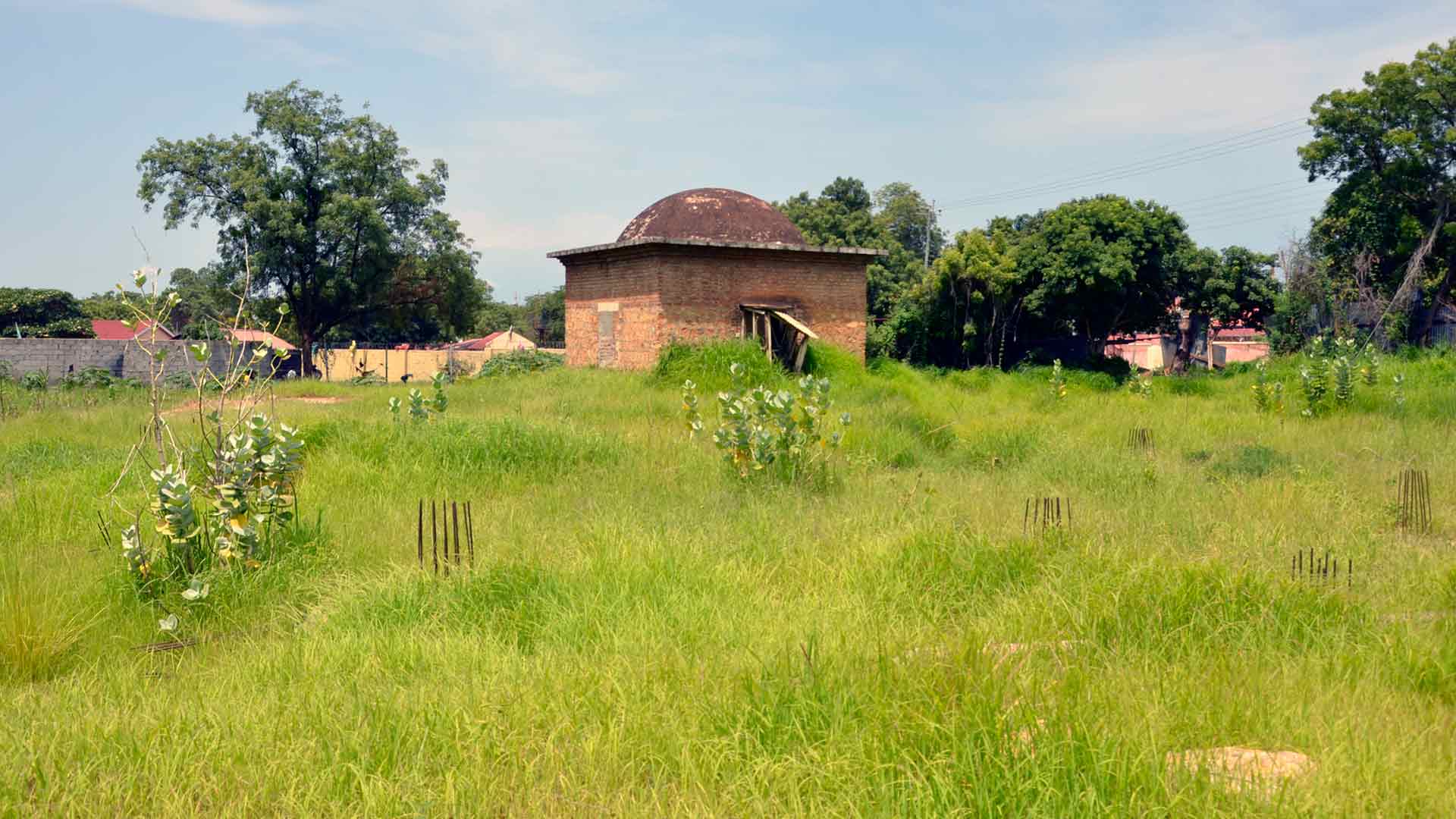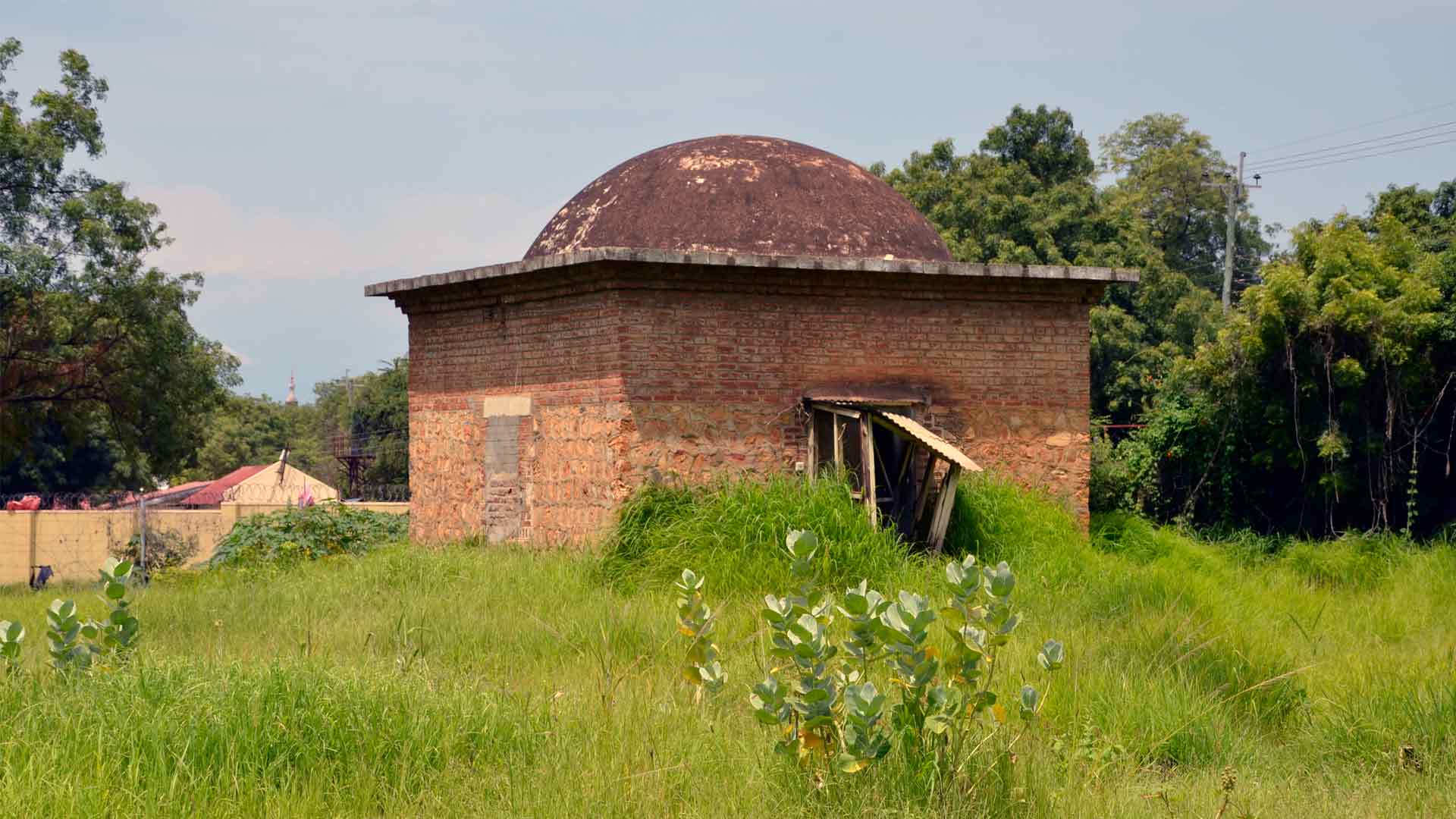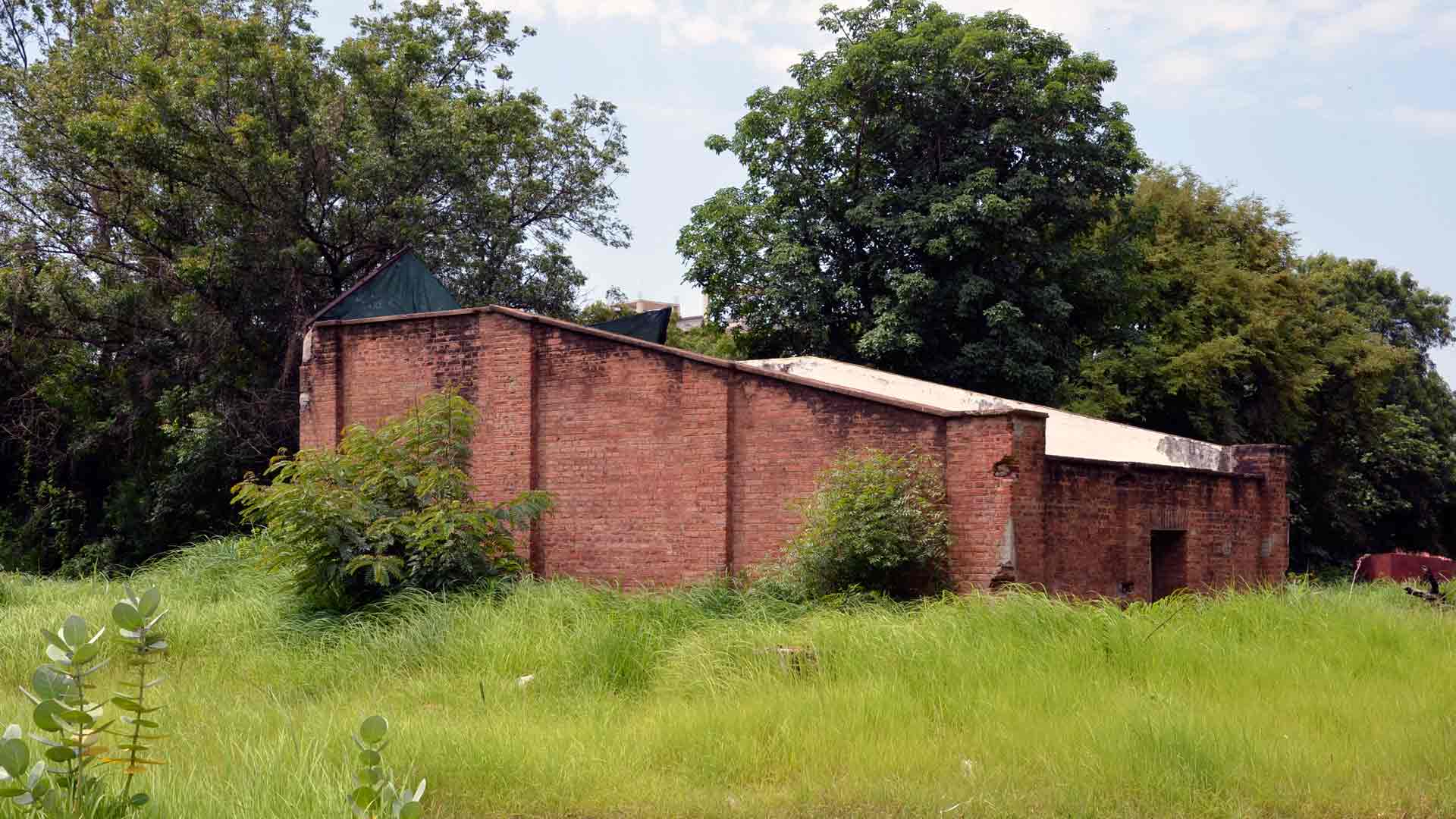Juba Town
This is an iconic roundabout in Juba topped by a historical monument: the milestone indicating the distances to regional capitals that was put in place by the colonial regime in the first years of the city. It features on a photograph dating back to 1928, where we can distinguish, in the back, the Muderia (the Governor’s Office), still in use today by the Governor of Jubek Sate.
Among other buildings constructed here in the early life of the colonial city, the Juba Hotel has been almost entirely demolished in 2010, despite its historical significance. On the side of the road going north, towards the airport, one can still distinguish the words “Juba Hotel” written in cracked letters on an old sign. The somewhat legendary, yet little known Juba Hotel used to host visitors passing through the region, and it is believed that Queen Elizabeth spent a few nights here during World War II. Only parts of the building have been preserved, including a bungalow. Years ago, in the euphoria created by South Sudan’s independence, flashy posters were announcing the construction of a brand new complex, Juba Dream Hotel, on the site. They have since been washed away by the rain. The plot is bushy and looks abandoned.
To the south of the roundabout a road leads to the Juba Teaching Hospital, established in the 1940s.
The Anglo-Egyptian colonial authorities chose Juba as a regional headquarters from around 1921, and developed the city in collaboration with foreign merchants, such as Greeks, Lebanese, Syrians, Cypriots and northern Sudanese Arabs.
Note: the black and white, archival photographic material shows areal views of Juba and the offloading of a boat in 1928, as well as the milestone and Muderia roundabout. Courtesy of Durham University.



